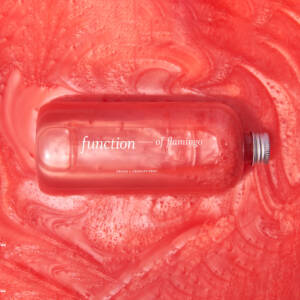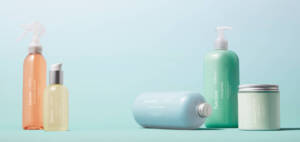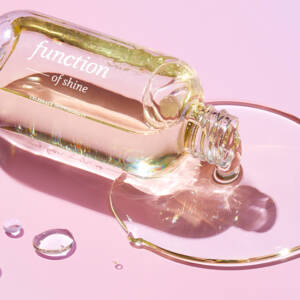If there’s one thing we can all get behind when it comes to our tresses, it’s that hair damage is never a good thing. Say what you will about your ultimate hair goals. But we can all probably agree no one wants dry, brittle strands that split and break off, no matter your hair type, color, or cut.
Unfortunately, it’s your daily haircare routine that often causes the most damage to your mane — think heat-styling, aggressive brushing, sun damage, and improper washing. That’s why you need to make sure you’re caring for your hair the right way.
What exactly does that mean? We recently caught up with our lab team to dish on why hair fibers break and what you can do to stop damaged hair from happening. Here’s what they had to say.
What Is Damaged Hair?

Hair damage occurs when aggressors (read: friction, heat, and harsh chemical treatments) attack the protective outer layer of your hair (aka the cuticle). This leaves cracks in its exterior, lifting up the cuticle.
Not only does this cause your mane to look dull, dry, or frizzy, but it also makes it more prone to damage and breakage. In other words, you and your tresses are trapped in a seemingly never-ending nightmare. But don’t worry — all hope is not lost.
9 Ways to Manage Damaged Hair
Sure, you may not be able to completely repair hair that’s already wrecked. But there are still plenty of steps you can take to help prevent further damage from happening in the future.
1. Improve Your Hair Brushing Skills
You may have heard that brushing your hair 100 strokes a day is part of a healthy haircare routine, but that’s nothing more than a hair myth.
In reality, excessive brushing can severely damage the hair shafts. This is especially the case when brushing damp hair, as it’s at its most elastic and thus more likely to break. The constant tugging on your follicles may even trigger a form of hair loss known as traction alopecia.
Instead, it’s recommended that you apply a post-shower conditioner, like Function of Beauty’s fully customizable leave-in treatment, to wet hair. Use a wide-tooth comb to gently rake it through your strands, detangling them as you go. You should also avoid brushing your hair throughout the day, with tangles being the only exception.
2. Invest in Good Hair Ties

Now, don’t get us wrong. We love our hair ties — how else would we be able to get through a workout without our ponytails and braids? But that doesn’t mean they aren’t one of the many culprits behind damaged hair.
Useful though hair ties may be, they tend to pull on the scalp and follicles, possibly inciting traction alopecia. That’s why you may sometimes notice strands fall out each time you undo your elastic.
To prevent this, try wearing your hair down more often. Or, at the very least, opt for a breakage-preventing style, like an Invisibobble.
3. Step Up Your Blow-Drying Game

It’s no secret that heat damage batters your locks (*side-eyes the blow-dryer*). But did you know that blow-drying can be less damaging than air-drying, so long as you do it correctly?
The key is to learn how to dry your hair the right way.
That means allowing your hair to air-dry a bit first (about 75% of the way) before finishing it off with a blow-dryer. Remember, a heat protectant should always come before your hot tool. ICYDK, our customizable hair serum is an excellent option for any form of heat styling, from curling irons to flat irons. Plus, the lightweight serum is unlikely to grease up your strands the way hair oils typically do.
When drying your hair (preferably on the lowest heat setting), put at least a half-inch space between your strands and the dryer. This will help avoid scorching your ends and damaging your hair. It also won’t hurt to give your strands a break from the heat at least a few times a week.
4. Know How Often to Wash Your Hair
Let’s get this straight, once and for all: How often you wash your hair is entirely up to you and hinges upon your hair type, hairstyle, and lifestyle. That said, there is such a thing as over or under washing your mane, which can lead to damaged hair.
Daily washes are fine if you have oily hair. Meanwhile, those with extremely dry hair (think natural hair types like curly hair) may only need to shampoo weekly. Otherwise, you risk stripping the hair shafts of their natural oils.
Either way, you want to make sure you’re washing your hair with a shampoo that’s formulated for your hair type at least once every couple of days (or whenever it gets dirty). Infrequent washing can lead to a buildup of dead cells, product buildup, oil, and bacteria, all of which can cause — yep, you guessed it — damaged hair.
5. Protect Your Hair Against Chlorine + Saltwater

While undeniably fun and refreshing, it’s no secret that chlorine and saltwater are also incredibly harsh on delicate hair strands. Now, we would never suggest skipping out on your next beach vacation (you earned that!). But that doesn’t mean you have to live with the resulting damaged hair either.
Instead, take the American Academy of Dermatology’s (AAD) advice and immediately rinse the ocean/pool water from your tresses. Next, apply a deep conditioning treatment, which helps to form a protective barrier around the hair shafts and lock in moisture for an extra dose of damage prevention.
In need of a deep conditioner? Try Function of Beauty’s custom hair mask infused with Japanese sake extract, argan oil, jojoba ester oil, and a custom blend of ingredients depending on your hair goals. It’s ideal for all signs of damaged hair, from split ends to hair breakage.
6. Ditch Your Regular Bath Towel

Using the wrong towel can literally make or break your hair (specifically the latter), as your mane is in its most vulnerable state when it’s fresh-out-of-the-shower wet.
We highly suggest not to use a harsh cotton towel, which can cause friction, leading to frizzy hair and breakage. Instead, reach for a plush microfiber towel or a cotton T-shirt. Both fabrics are not only softer and more gentle on your strands but also specially designed to help dry your hair faster. This helps reduce the amount of swelling that occurs in wet hair shafts, which makes them vulnerable to damage in the first place.
7. Hydrate, Hydrate, Hydrate!

While properly hydrating your hair may seem a bit obvious, it’s worth repeating that without optimal hydration, your hair looks dull, frizzy, and much more prone to breakage.
Any good haircare routine should start with hydrating hair products that provide ample moisture. For fine, thin, and oily hair types, look for lightweight hydrators like aloe juice and glycerin. Meanwhile, those with coarse, thick, and dry hair may prefer rich, moisturizing ingredients like coconut oil and fatty acids.
No matter your hair type, it’s in your best interest to skip potentially harsh ingredients like sulfates and drying alcohol. Our customized haircare formulations not only check off both boxes but they also give you the option to add five hair goals to your formula to promote the appearance of healthy hair all year round and tone down the odds of damaged hair.
8. Beware of Overprocessing
If you use hair dyes, perms, relaxers, and/or bleach, all of that chemical processing could be causing irreversible hair damage.
While not all chemical treatments are the same with regards to the amount of damage they create (a semi-permanent process like a gloss is far less damaging than a double process like bleaching), they are still anything but harmless.
That’s because the harsh chemicals in these treatments hike up your hair’s porosity level to the point of exposing the hair cortex. Once the cortex is broken, it leads to extreme breakage — and damaged hair.
To help counteract the adverse effects of frizz and brittle hair associated with chemical treatments, keep the fibers constantly hydrated. Also, regularly use nourishing products like a deep conditioning mask or a daily leave-in treatment.
Last but not least, the AAD recommends extending the time between your sessions to 8-10 weeks, if possible, to ensure you don’t overdo it. Your locks can only take so much, after all.
9. Make a Standing Appointment With Your Hairstylist
The easiest way to stop hair damage in its tracks? Cut it off!
While a haircut may seem a bit drastic at first, regular trims are a great way to stave off split ends. These damaged tips can travel up the length of the hair shafts, causing even more breakage.
Rather than let your mane get to that point, simply book a standing appointment with your hairstylist every 6-8 weeks so your split ends won’t stand a chance.
Ward Off Damaged Hair Once and for All
Damaged hair need not be seen as a lost cause, as there are multiple ways to handle it. From dialing down the hair brushing to scheduling timely trims, you can keep hair damage under control.
To further boost the odds of better hair health, make sure you invest in the right haircare products tailored to the unique needs of your mane. With Function of Beauty’s 100% customizable formulations, you know your tresses will be in good hands.
If you’re ready to say goodbye to damaged hair once and for all, take our hair quiz and get ready to meet your hair goals.





